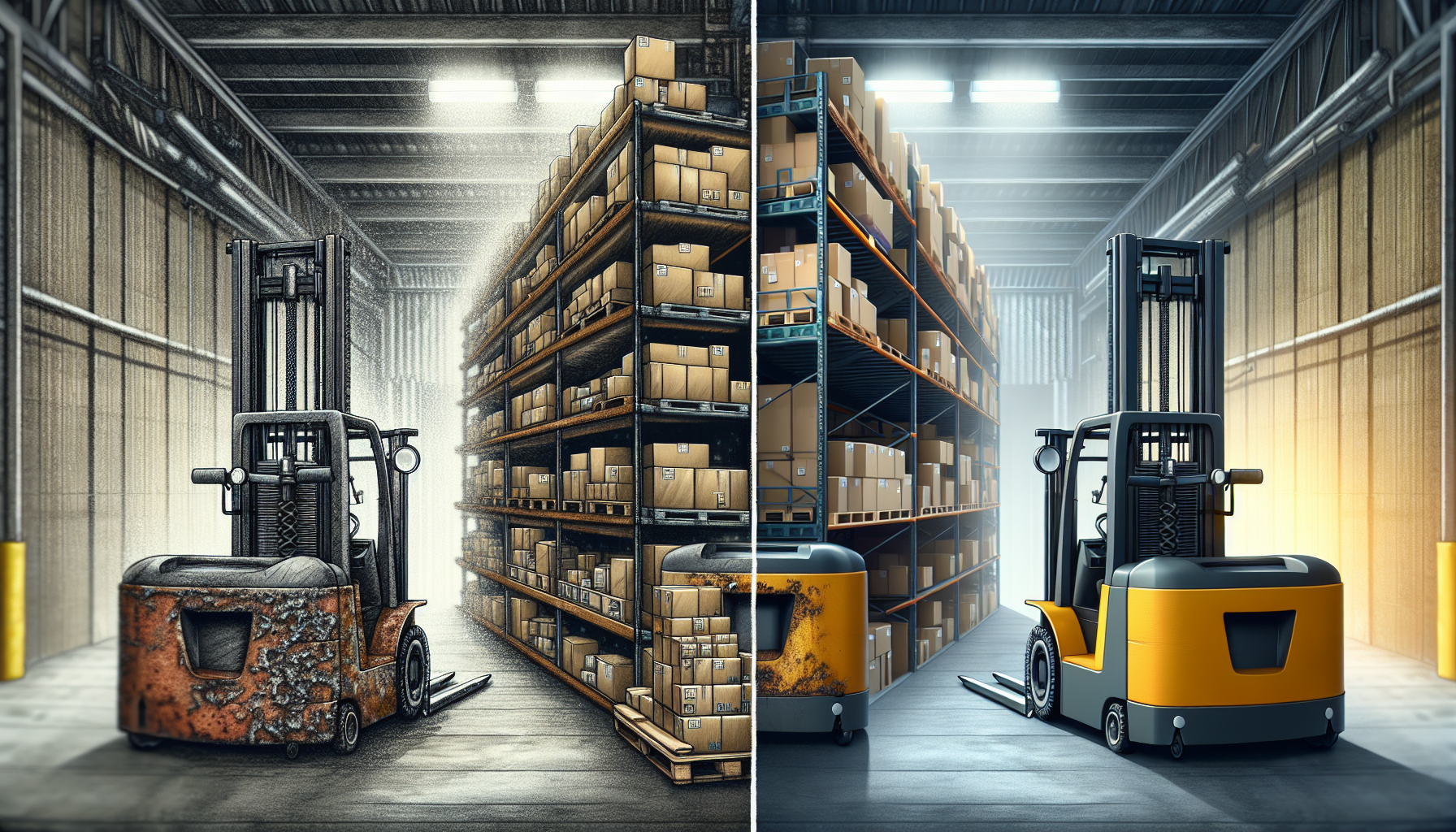When it comes to warehouse operations, having the right material handling equipment is crucial. Whether you run a small warehouse or a large distribution center, investing in modern and efficient equipment can significantly enhance your operations. In this article, we will explore the benefits of upgrading your material handling equipment and how it can positively impact your warehouse’s productivity, safety, and cost-effectiveness.
Improved Efficiency
One of the main advantages of upgrading your material handling equipment is the improvement in efficiency. Modern equipment is designed with advanced technology and features that can help streamline your warehouse operations. For example, automated conveyors and sortation systems can transport goods quickly and accurately, reducing the time spent on manual handling and increasing throughput.
Upgrading to more efficient equipment can also minimize errors and improve order accuracy. Automated picking systems, such as pick-to-light and voice picking, can guide warehouse workers to the right location and item, reducing the chances of picking errors. This not only saves time but also prevents costly mistakes and improves customer satisfaction.
Enhanced Safety
Safety should always be a top priority in any warehouse environment. Outdated or inadequate material handling equipment can pose significant risks to both workers and the products being stored. Upgrading to newer equipment can greatly enhance safety measures in your warehouse.
For instance, modern forklifts and pallet jacks are equipped with advanced safety features such as sensors, cameras, and warning systems that help operators avoid collisions and accidents. Ergonomic designs also reduce the risk of operator injuries, enhancing the overall safety of your warehouse operations.
Additionally, upgrading to equipment with improved load capacities and capabilities can ensure that your workers can handle heavy or bulky items safely. This prevents overexertion and reduces the likelihood of musculoskeletal injuries.
Increased Productivity
Upgrading your material handling equipment can have a significant positive impact on the productivity of your warehouse. Newer equipment is typically more efficient, reliable, and faster, allowing you to complete tasks in less time.
For example, upgrading to automated guided vehicles (AGVs) or robotic systems can automate repetitive and time-consuming tasks such as order picking and transporting goods within the warehouse. This allows employees to focus on more complex and value-added tasks, boosting overall productivity.
Moreover, modern equipment often requires less maintenance and downtime, reducing the likelihood of unexpected breakdowns that can halt operations. With improved equipment reliability, you can minimize disruptions and maximize uptime, leading to increased productivity in your warehouse.
Cost Savings
While upgrading your material handling equipment may require an upfront investment, it can lead to long-term cost savings. Improved efficiency and productivity can result in reduced labor costs, as your employees can accomplish more tasks in less time with the help of advanced equipment.
Upgrading to energy-efficient equipment can also help you save on utility costs in the long run. Modern equipment is designed with energy-saving features, such as regenerative braking systems and variable speed drives, which can significantly reduce energy consumption compared to older models.
In addition, upgrading your equipment can minimize product damage and loss. With advanced handling capabilities and safety features, there are fewer chances of mishandling or accidents that could result in damaged goods. This helps preserve the quality of your inventory and reduces the need for costly replacements.
Lastly, modern material handling equipment is designed with scalability in mind. As your warehouse operations grow and evolve, you can easily integrate additional components or systems to accommodate increased demand. This scalability allows you to adapt to changing business needs without having to make significant equipment replacements.
In conclusion, upgrading your material handling equipment offers numerous benefits for your warehouse operations. From improved efficiency and enhanced safety to increased productivity and cost savings, investing in modern and efficient equipment can help your warehouse stay competitive and thrive in today’s fast-paced business environment. To learn more about material handling equipment management and the solutions we offer, visit HCO Innovations.

